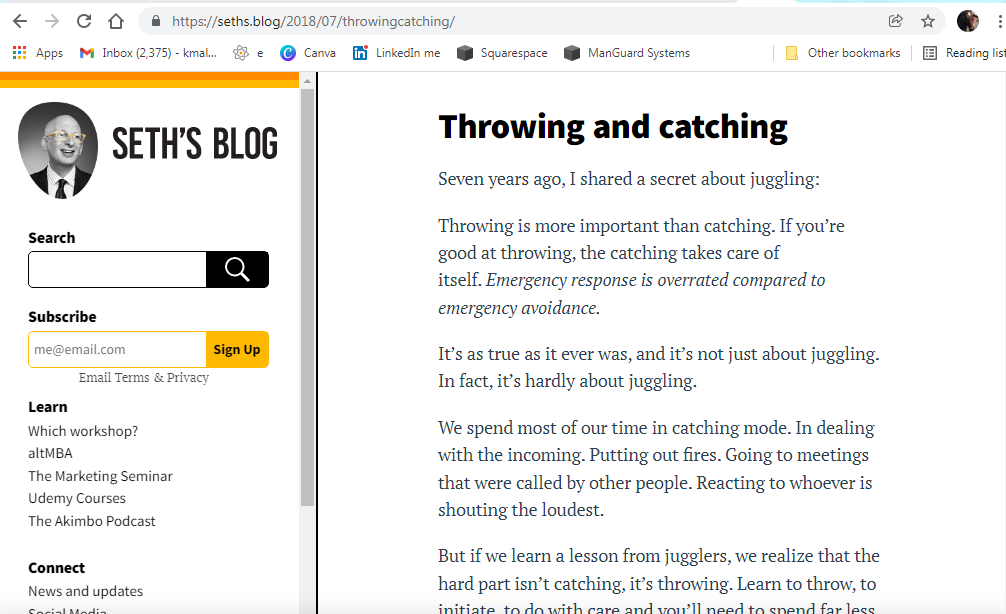39 Days: Weekend in the Weeds: Juggling SDS Constituents, Constituents, and CAS Number tables
CAS Chemical Abstract Services Numbers on my data sheets of Proprietary, Trade Secret, Mixture, Non-Hazardous, and others? How do I conduct threshold determinations around those? Learn to juggle between them…
In this post you will start to see, if you haven’t already, the need to have some fields where you store your interpretation of the SDS. These are in addition to the fields that track the information that the Manufacturer/Supplier provided you…
"Juggling” between SDS Constituents, Constituents, and CAS Numbers
Tables you may find useful for managing constituents. Btw, I’m spelling out field names so you understand what they are, the actual field names are quite different, shorter, and missing spaces and special characters except underscores _.
CAS Number Master table: But we only load it with CAS Numbers you have encountered on SDS’s. Anything in this table should satisfy the CAS Number validity algorithm. Find the even deeper in the weeds than this blog post here or for a usable version check out this Excel, not much simpler. We had an actual developer code a function that does this for us, it’s just a check sum on the check digits and that the format is correct.
Constituents table: The combination of CAS Number and Constituent Name as received on the Safety Data Sheets. The key fields in this table are No CAS Number OK which is a Yes/No field (only Yes’s are relevant) and No CAS Number OK Reason.
SDS/Constituents table: Maintains the CAS# and Constituent Name as provided on the SDS. For an actual (long) chemical name, we would point back to the CAS Master table. This table has lots of additional fields, some that appear on the SDS, some the values we will use for calculations based on that information. Useful additional fields include the Numeric Percent Value, which is what you will calculate against. It also includes Min and Max values for when a range is provided. Constituent As Received is a text field, since the Numeric Percent field only accepts numbers, and an SDS where the constituent percent comes in as “Balance” would not be able to be entered in the NumPct field.
Other fields:
Percent Type: weight or volume?
Is this the TIer Primary constituent, which gives it a check box on the Tier2 form (or the equivalent in the software you’re using),
text field for Operand (greater than symbol >, less than symbol <,), which makes them easy to search for to conduct conversion to NumPcts for those types of constituent entries;
User Assigned Tag, which is what you would flag in the Gasoline example (see Day 36 post), where Gasoline has a single CAS Number, but to accurately conduct threshold determinations and subsequent Toxics Release Inventory TRI reporting you need the individual constituents of gasoline such as benzene, toluene, and other specific CAS numbers.
We have fields for tracking that we changed the CAS Number when wrong (frequently transposed digits, missing digits, or a typing error. If you search for the chemical name’s CAS# and see where the error occurred, we change it and then reach out to the SDS provider for them to provide us with an updated/corrected SDS. Possibly after March 2nd.
All tables have a field for Comments (not very useful unless standardized) and some tracking dates/user ids.
You’ll see when we get to Constituent cleanup steps next week that this combination gets you pretty much where you need to be
Community outreach: How have you managed these “ambiguous” CAS Numbers on SDS’s?
#SARA312 #SARATierII #SARATier2 #EPCRA #EGLE #March1EPAReportDeadline #CASNumbers #Consituents #BadCAS #AmbiguousConstituents
Michigan EGLE links from first and second webinars of 2022 SARA 312 virtual training courses:
I’m keeping these links for awhile because they are so useful. I’ll post the session 3 recording info when it becomes available.
You can sign in and listen even if you didn’t sign up for the webinar series.
RECORDING LINK FOR SESSION 2: Wed Jan 19, 2022.
Really good example on batteries. This is the “in the weeds” how to conduct your threshold determinations episode: https://attendee.gotowebinar.com/recording/4027906237723673347
I talked to Mike Young, one of the presenters, right after the first webinar. He said that it’s not unusual for them to take phone calls from people from other states (with the warning to confirm that your state doesn’t have differences in their requirements compared to Michigan).
RECORDING LINK FOR SESSION 1:
https://attendee.gotowebinar.com/recording/7957790593170499843
PRESENTATION: (I wasn’t able to attach a copy of the presentation, email the link below and they will send it to you)
SARA TITLE III – TIER II REPORTING WEBSITE: http://www.michigan.gov/sara
MICHIGAN FACILITIES’ GUIDE TO SARA TITLE III: https://www.michigan.gov/documents/deq/deq-oea-saraguidebook_509720_7.pdf
CONTACT INFORMATION:
Mike Young and Adam Pohl
517-284-7272
